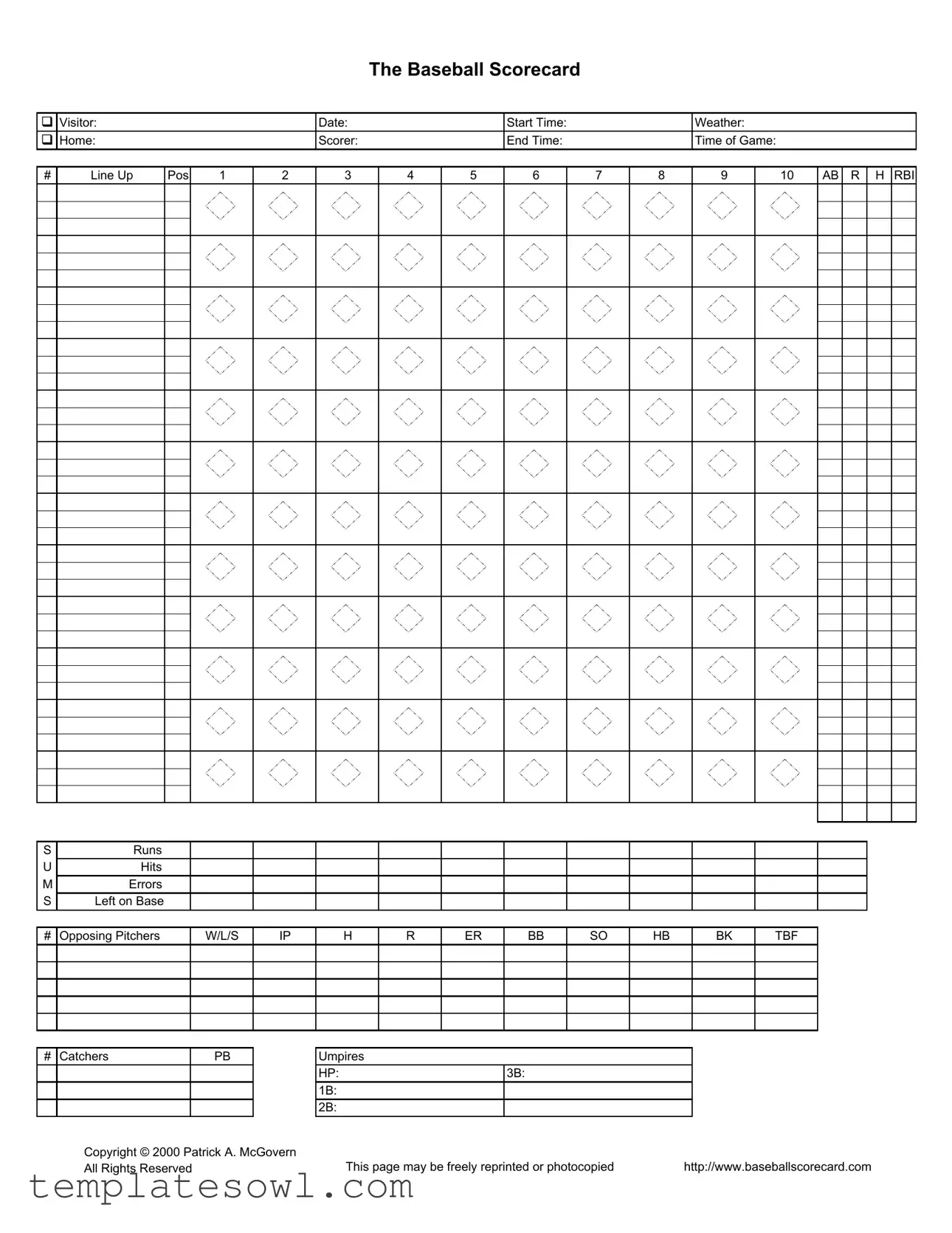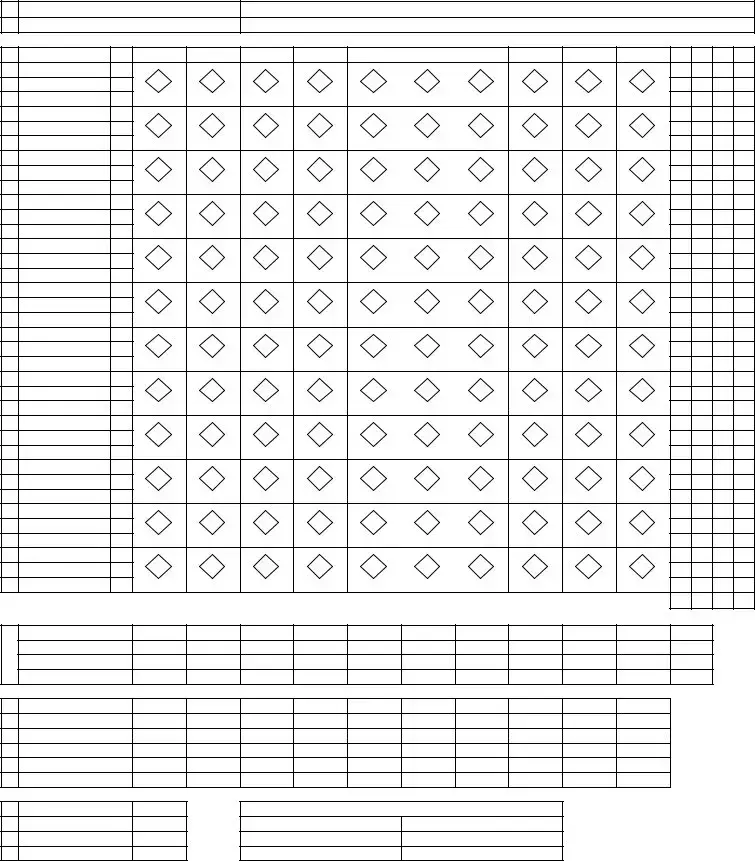What is a Baseball Scorecard?
A Baseball Scorecard is a document used to record the details of a baseball game. It helps keep track of various statistics such as runs, hits, errors, and the performance of individual players. By filling it out during the game, you can create a comprehensive overview that can be referred to later for analysis or memories of the event.
What information do I need to fill out on the scorecard?
Your Baseball Scorecard requires several key pieces of information including the names of the visiting and home teams, the date of the game, start time, weather conditions, and the scorer’s name. Additionally, you will need to input the line-up for both teams, the performance statistics of players, and the details about the opposing pitchers and umpires present during the game.
How do I keep track of player statistics?
To track player statistics, mark each player's at-bats, runs, hits, runs batted in (RBI), and other relevant statistics during the game. You can use designated spaces on the scorecard for each player. Notations can be made for successful plays as well as mistakes. This allows for a complete record of each player's performance throughout the game.
What is the purpose of recording weather conditions?
Recording the weather is important as it can have an effect on the game. Different weather conditions, such as wind or rain, can influence how players perform and the outcome of specific plays. Capturing this data allows for a fuller understanding of the game's context when reviewing it later.
Can I use the scorecard for any baseball game?
Yes, the Baseball Scorecard can be used for any type of baseball game, whether it's a professional game, a high school game, or just a casual pick-up game with friends. It is a versatile tool that enhances enjoyment and engagement with the game, allowing for detailed tracking no matter the level of play.
What should I do if I make a mistake on the scorecard?
If a mistake is made, it is completely normal and can be corrected easily. You can either erase it if you are using a pencil or simply cross out the incorrect information and make the correct entry next to it. The scorecard serves as a record of the game; accuracy is important, but the primary goal is to capture the essence of the game while enjoying it.
Is there a way to keep my scorecard for future reference?
Yes, once you’ve completed your scorecard, it's a good idea to keep it safe for future reference. You can scan or photocopy it if you'd like to preserve the original, or you can keep the completed scorecard in a folder or scrapbook dedicated to your baseball memories. Many fans enjoy looking back on their scorecards as a way to relive exciting games.

